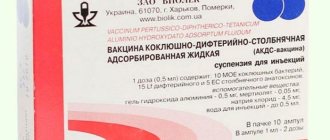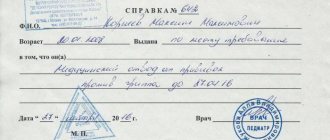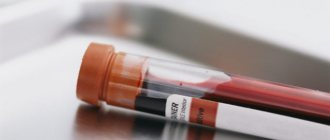Vaccination against tuberculosis is carried out 3-4 days after birth. This helps protect the child’s body from the penetration and spread of mycobacterium tuberculosis. The vaccine has contraindications and side effects. Mothers often notice that their newborn's BCG is festering.
Both physiological and pathological reasons contribute to this.
How is an abscess formed and when does it appear?
The process of pustule formation and final healing occurs in several stages over 10-12 months.
The duration and clinical manifestations of each stage vary depending on the individual characteristics of the organism, the vaccination technique and the quality of the drug. Normally, the following stages can be observed:
- Immediately after administration, the skin at the injection site in both the newborn and the child at a later age turns white and thickens (resembles an orange peel in appearance). Within 30-40 minutes this reaction passes.
- A day after immunization, redness and slight swelling appear, which disappear within 2-4 days without leaving any traces. After this, there should be no manifestations for 30-45 days.
- At 1.5-2 months, the BCG vaccination begins to fester. At this stage, redness and thickening form at the site of drug administration, indicating the normal formation of immunity and culminating in the formation of a pustule (a vesicle with purulent contents).
- At 5-6 months, the suppuration at the BCG site breaks through with the flow of pus or becomes covered with a crust, which subsequently dries out and falls off on its own.
- Most often, before the child is one year old, the abscess heals completely and a small depression (BCG scar) remains at the injection site.
Rules for caring for the BCG vaccination site
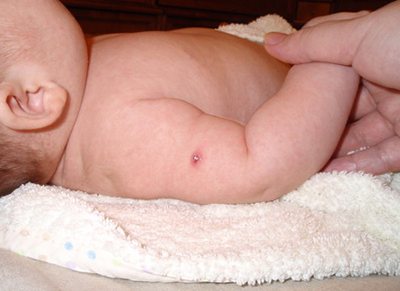
A specific reaction occurs at the injection site for tuberculosis vaccination (between the upper and middle third of the shoulder): approximately 5 weeks after vaccination, a small pustular formation appears, which then heals with the formation of a crust and scar.
It is formed by the first half of the baby’s life, and takes on its final form only by the age of one year.
As scar tissue forms at the vaccination site, it is worth remembering some precautions:
- you should refrain from treating the injection site with disinfectants (alcohol, brilliant green, etc.);
- you cannot open the formed pustule , and if its opening occurs spontaneously, then again you should not smear the damaged area with anything;
- you cannot remove the crust that has formed at the vaccination site ; if the crust comes off spontaneously, then you need to protect the opened wound from external influences, including it should not be wetted;
- When washing the child, the vaccination area should not be soaped or rubbed with a washcloth.
Attention! Improper handling of the vaccination site can lead to complications such as ulceration, suppuration or excessive scar tissue formation (keloid formation) and even damage to the lymph nodes.
What should be the body's reaction to BCG?
The BCG drug provokes an allergic reaction in the body: T-lymphocytes accumulate under the skin, which begin to fight the causative agents of tuberculosis, which is why a corresponding reaction develops on the part of the skin. The vaccine is injected strictly into the inner layers of the skin (in no case subcutaneously), after which a white flat papule with a diameter of about 10 mm is formed at the injection site, which resolves after 18–20 minutes - this means that the drug was administered correctly.
In the first days, any changes in the skin at the site of vaccine administration are not noticeable, but sometimes slight redness, thickening or inflammation of the skin may form - this is considered normal.
It is important to note that such reactions can continue for 2-3 days, after which the injection site (before the formation of a papule and scar) should not differ in appearance from the surrounding tissue
When appears
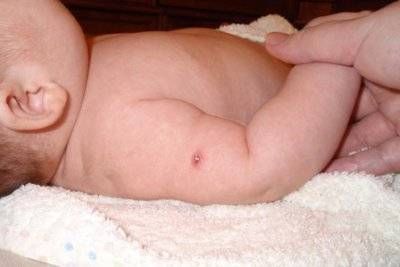
About a month after the injection (depending on the individual reaction), a small papule appears at the injection site, which looks like a blister with slight suppuration.
This is a normal reaction and indicates that the vaccination was successful, the body “gets acquainted” with the pathogens of the disease and develops immunity.
In some cases, the formation of a papule and its healing is accompanied by severe itching, but scratching it is strictly prohibited so as not to introduce an infection under the skin. Sometimes a person may have a slight fever, but if the numbers on the thermometer do not rise above 37-38, there is no need to worry.
Three months after vaccination, the papule becomes covered with crusts and heals, and in its place an even white scar appears, sometimes with a pink or reddish tint. The size of the scar can be different and depends on the individual characteristics of the body and the quality of the formed immunity. The best option is a scar with a diameter of 7 to 10 mm. The formation of a scar of less than 4 mm indicates that vaccination has not achieved its goal and anti-tuberculosis immunity is absent.
Important! There are certain rules for caring for the injection site of the BCG vaccine - the resulting papule should not be lubricated with antiseptics, pus should be squeezed out of it, crusts should be removed or tightly wrapped with a bandage
Deviations from the norm: photo
The most common abnormality after BCG vaccination is the absence of any reaction. The absence of a papule and scar at the injection site indicates that the vaccine has expired or the body has not responded to its administration by developing anti-tuberculosis immunity. In this case, a tuberculin test (Mantoux) and repeated administration of the vaccine are necessary.
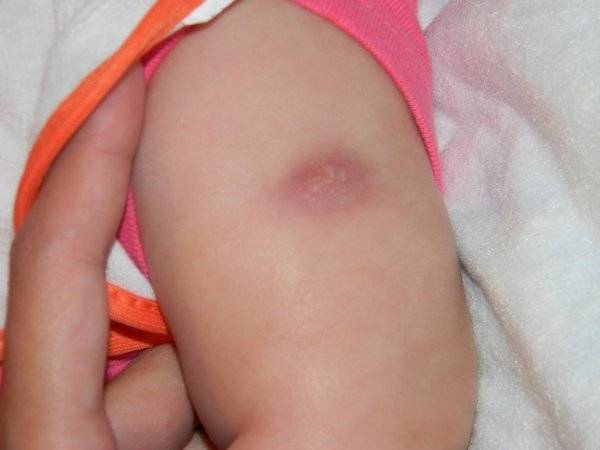
Photo 2. Usually after an injection a papule is formed - a blister with suppuration. This is normal, a deviation from the norm is the absence of any reaction at all.
In some cases, a scar forms after vaccination, but then suddenly disappears - this indicates the disappearance of anti-tuberculosis immunity, and requires revaccination of the person. Approximately 2% of people on the planet have innate immunity against tuberculosis, so they also do not form a scar - the presence of such immunity can also be determined using the Mantoux test.
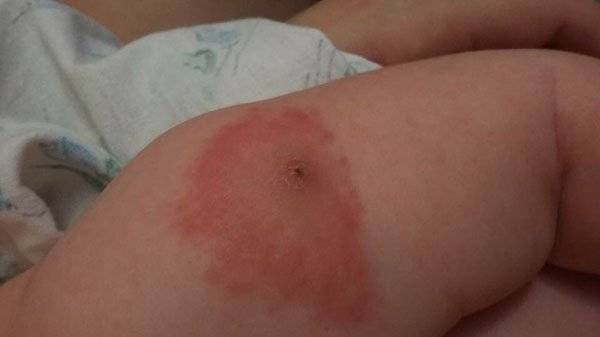
Photo 3. The graft site may become very red. If this is not too pronounced, there is no reason to worry.
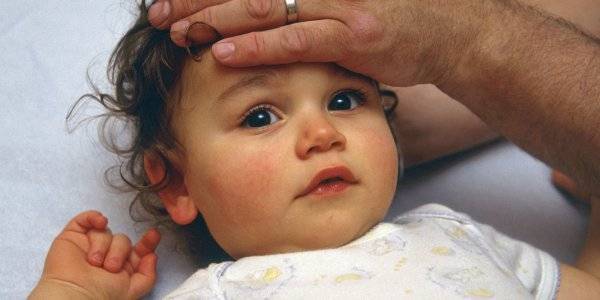
? Photo 4. A child’s temperature that is not too high after BCG is normal; there is no need to call a doctor.
Other reactions from the skin and the whole body (severe redness, thickening, temperature) occur due to the characteristic characteristics of the human body or sensitivity to the drug, and, as a rule, do not require medical intervention. If they are expressed too strongly, consultation with a specialist is necessary.
Reference! In some cases, the scar after the administration of the BCG vaccine is formed not on the surface of the skin, but in the deeper layers. Its presence can be determined by a change in skin color and slight thickening.
How is the vaccine given?
According to WHO recommendations, the BCG vaccine is given in the forearm. A suitable place for vaccination is on the outside of the left arm. It is strictly forbidden to give an injection intramuscularly or subcutaneously; the liquid is injected into the skin. If for some reason an injection into the shoulder is not possible, the surface of the thigh is suitable.
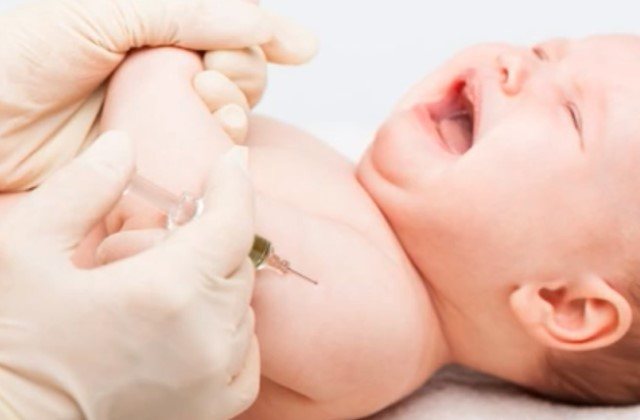
Such vaccinations are permitted only with disposable syringes. The needle should be thin and have a beveled tip. First, the doctor has to tighten the skin on the desired area of the arm. The liquid is introduced gradually so that the specialist can control the distribution of the vaccine.
If the BCG vaccination was administered correctly, a reaction appears at the injection site. A small whitish papule gradually appears on the surface of the skin, the diameter of which should not exceed 10 mm. Within half an hour it disappears when the liquid is absorbed and enters the body.
No other vaccinations are given at the same time as BCG. Therefore, if you plan to undergo other vaccinations, they will have to be postponed for some time.
Contraindications to the vaccine
The development of various kinds of complications may be the result of contraindications in the child.

The ban on the introduction of living organisms to newborn children is based on the presence of one of the following factors:
- low baby weight;
- intrauterine infection with pathogenic microorganisms;
- diagnosis of HIV infection in the mother;
- immunodeficiencies of various etiologies;
- diseases of the central nervous system;
- the presence of inflammatory processes in the body;
- active stage of the disease after diagnosis using x-ray photos.
These contraindications are absolute. If they are present, the BCG vaccine is completely prohibited. Vaccination will not provide complete protection against tuberculosis, but it can help develop immune defenses against bacterial agents.
The duration of the drug is on average 7 years. After this period has expired, revaccination must be carried out. Before this, a mandatory Mantoux test is performed.
Before administering the BCG vaccine, you must undergo a full examination by specialized doctors. This will help reduce the likelihood of complications and also protect the child’s health.
Contraindications
Before vaccination, the child is examined. If there are any contraindications, it is prohibited to do BCG, otherwise the risk of complications and a poor reaction of the baby’s body increases. The list of prohibitions includes:
- the presence of HIV infection in the mother;
- prematurity;
- weight less than 2.5 kg;
- radiation therapy;
- acute illness;
- tumors;
- skin lesions;
- purulent-septic pathology;
- hemolytic disorders.
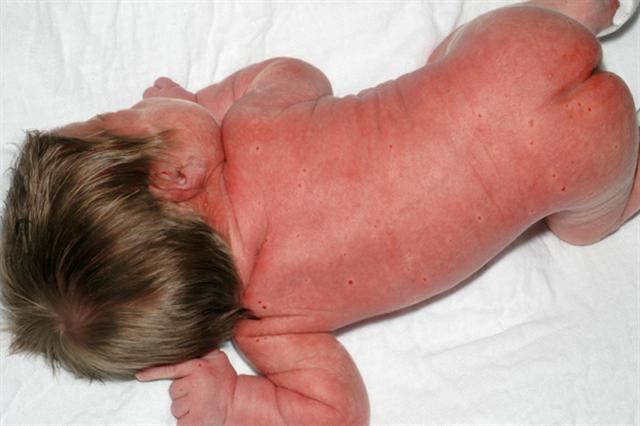
In older children, allergies, a questionable reaction to the Mantoux test, low immunity and frequent contact with a person suffering from tuberculosis also become obstacles to vaccination. Before administering the vaccine, an examination by a pediatrician is required.
We recommend reading! Follow the link: BCG complications what parents need to know
After the end of the acute period of allergy or active disease, you will have to wait a month before re-vaccination. At this time, the child requires special attention and at the first suspicion of infection or an abnormal process of abscess formation, it is necessary to urgently consult a doctor.
Recommendations from experts
Some time after the vaccine is administered, the baby can receive baths. You need to bathe him in boiled water. During water procedures, it is strongly recommended not to rub the injection site with a washcloth or towel. Also, do not steam it.
At all stages of the formation of immune protection, the child’s clothes should be ironed on both sides. This is necessary to avoid mechanical impact on the wound.
The wound regeneration process should occur naturally. The use of creams and ointments can be harmful to the baby's health.
While the injection site is healing, the child should be protected from contact with sick people; it is not recommended to stay in public places for a long time. The duration of recovery during the period of wound regeneration from BCG lasts a long time.
You also need to adhere to several rules:
- Before vaccination, it is worth undergoing allergy tests to determine compatibility with the components of the drug.
- If pus comes out of the BCG vaccination, the pediatrician or Dr. Komarovsky, along with his resources, will tell you what to do. You cannot specifically squeeze out the contents. The bubble itself must burst. After this, it can be processed, which will help with hydrogen peroxide.
- The use of ointments, creams, and the use of iodine nets is prohibited.
- Isolation of the wound from external factors. This can be done with light clothing. In this case, you can apply a light bandage so that the pus goes into it. It is also worth making sure that the child does not scratch the injection site, since the contents should come out naturally.
- Maintain the same diet before and after the administration of the BCG vaccine. This will help diagnose the etiology of allergic reactions.
If BCG has festered in a child, an experienced pediatrician will tell you what to do. To avoid serious consequences, it is recommended to follow doctors’ instructions from the moment the baby is born.
If you have any symptoms indicating future complications, you should urgently consult with specialized specialists. Only they will help prevent the development of adverse consequences and keep the baby healthy!
Actions after opening a purulent capsule
If the papule bursts and pus comes out of it, there is no need to treat the wound with any antibacterial agents. All that parents have to do at this moment is to blot the affected area with gentle movements using a sterile napkin and temporarily cover the wound with a bandage. Otherwise, the baby will scratch it, which will increase the risk of infection.
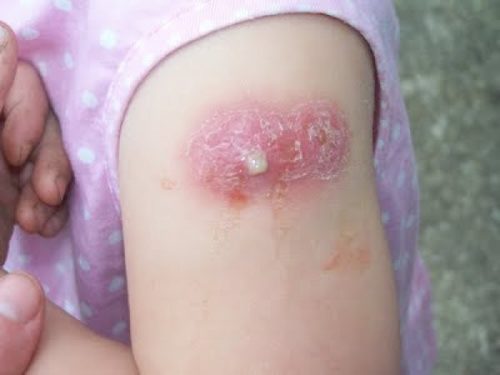
After a short time, a crust forms on this place and the bandage can be removed.
Associated symptoms

If the BCG vaccine turns red, the following accompanying symptoms may appear:
- Formation of an abscess at the injection site. This is considered a normal reaction of the immune system to fight pathogenic agents. Sometimes vaccination leaves a scar that extends beyond the injection site. Such a reaction is also considered normal. This is how the skin reacts to the vaccine. Redness of the scar can be observed for six months. In some cases, this symptom goes away within a week.
- Swelling. Sometimes parents notice that the child’s vaccination site is slightly swollen. A similar symptom is present for 2-3 days, after which it disappears spontaneously. After 1.5 months, inflammation begins, followed by the appearance of scar changes. Redness and swelling should not spread over large areas. If a hyperergic reaction occurs, the child should be shown to a TB specialist.
- Abscess. Mothers are worried if their child’s BCG vaccine turns red and an abscess appears. With an adequate course of the post-vaccination reaction, after 2 months a small abscess forms, which becomes covered with a crust and scars. If the abscess forms again, the injection site could become inflamed due to the penetration of bacteria. In this case, specific treatment is required. You cannot intentionally remove the crust. Later it goes away on its own, the wound scars.
- Itching. If your baby's injection site is itchy, don't worry. Itching is a sign of healing of damaged skin. You cannot scratch the injection site; it must be covered with a sterile bandage. Mittens are put on the child's hands.
- Temperature change. If the temperature does not exceed 38° C and the fever is present for 1-2 days, we are talking about a normal reaction of the body to the vaccine. The immune system begins to fight the infectious agent and produce antibodies. If fever persists for 3 days or more, you should consult a doctor.
- Inflammation of the lymph nodes. During the normal course of the early post-vaccination period, the lymph nodes increase to 1 cm. This indicates an immune response to foreign bacteria. A pronounced increase and prolonged inflammation of the lymph nodes is observed when the tuberculosis pathogen spreads in the body, which requires immediate initiation of treatment.
What exactly causes pus to appear?
Rotting after BCG vaccination in a child at 2 months is a natural reaction to the vaccine. Such changes are not a cause for concern if the abscess is small and the accompanying symptoms are consistent. Sometimes an immune response is observed in the form of redness without pus, which is also considered normal.
This is how the reaction to the strain of infection that has entered the body is manifested. The syringe is inserted intradermally. This leads to inevitable dermatological changes.
Sometimes such symptoms are regarded as manifestations of BCG infection. This is a serious complication of vaccination, but it is worse when the wound does not fester. The vaccine does not have the desired effect.
Suppuration is caused by improper administration of the drug. This occurs if the vaccine was given subcutaneously, and not intradermally, as required by the instructions. In addition, unpleasant symptoms are observed when using a low-quality vaccine.
Complications
Complications after BCG can occur even in those people for whom this vaccination was not prohibited for any reason. Regional lymphadenitis is considered a normal phenomenon: the lymph node located near the site of vaccine administration increases to 1 cm in diameter, a compaction appears at the site of vaccination, and a papule is formed that remains for up to 2 weeks (after which a small scar appears in its place). Complications often develop when instructions are not followed, indications for vaccination are ignored, etc.
Temperature
An increase in temperature after BCG vaccination is not considered a pathological manifestation if it goes away on the first day. It may appear the next day or within a few hours after the drug is administered to the body. The use of medications is necessary only when the indicator rises to 38°C or more. If the temperature remains elevated for more than 2 days, it is recommended to consult a doctor. At home, to combat this side effect, drink plenty of fluids.
If there is no temperature at all after BCG, the reaction is not considered good: there is a high probability that the child has not developed immunity to Koch’s bacillus.
Why does the vaccination site fester?
Suppuration can occur if the injection technique is incorrect. If the BCG vaccination festers, it is necessary to urgently begin treatment: purulent processes can spread. Often such a reaction develops due to a cold abscess. If such a complication of BCG vaccination occurs, you need to take action as soon as possible and consult a doctor.
Cold abscesses
Cold abscess after BCG is a side effect in which an abscess occurs, there are no other pronounced manifestations (temperature, redness, swelling, symptoms of intoxication). The complication does not immediately manifest itself aggressively; At first, you can only see a small wound at the injection site. Externally, it can manifest itself differently in each person, depending on the individual characteristics of the body.
Within 2-3 days after administration, you can observe that the BCG vaccination has turned red and slightly swollen. Then, however, such manifestations disappear, and within 1-1.5 months there are no manifestations of the pathological process. Then a papule appears, quickly turning into an abscess. It can break out in different ways. Normally, the neoplasm looks like a pimple, a capsule with clearly visible purulent contents. It reaches 1-1.2 cm in diameter.
For small suppurations, there is no need to worry. Their occurrence is considered a variant of the norm, a natural reaction of the body. If the size of the abscess is too large, the skin around the BCG injection site turns red, secondary infection or mechanical damage caused by improper insertion of the needle is possible. In such a situation, you will need the help of a specialist. BCG does not often fester; A similar complication is more often observed during the first vaccination than during revaccination.
Other
Lymphadenitis is considered normal if the diameter of the lymph node does not exceed 1 cm. In situations where, due to inflammation, the size is too large, you will have to consult a doctor. Sometimes surgery may be required.
Sometimes after BCG the consequences appear in the form of an ulcer that occurs at the site of insertion of the syringe. Keloids (areas of scar tissue that grow in the area where the vaccine was administered) also appear.
A rarer side effect of BCG is osteitis, an inflammatory process that develops in bone tissue. Bone tuberculosis is considered a more dangerous pathology. The pathology manifests itself 1-3 years after the introduction of weakened microorganisms and is difficult to treat.
After vaccination with BCG, an allergic reaction may result. A skin rash appears, and general symptoms of intoxication are noted (weakness, nausea, loss of appetite, increased fatigue; young children can become capricious and whiny). If a similar reaction to BCG was treated in an infant, at an older age they refuse the vaccine.
BCGit is also rarely observed.
Manifestations of erythema nodosum are possible. This pathology is characterized by the appearance of painful, swollen nodes on the body, a general asthenic state, and an increase in body temperature (low-grade fever is more often observed, and high temperature is less common).
Granuloma annulare is also manifested by the appearance of nodes. They are small in size (about 3-4 mm in diameter), high density, and often merge into rings.
Possible development of lupus. A specific rash appears on the limbs and face. In addition, there are joint pains and a general deterioration in well-being. Anemia, leukopenia, and thrombocytopenia develop.
When should you consult a doctor?
If the site of the BCG vaccination in an infant has become infected, there is no need to immediately consult a doctor. You should visit a pediatrician if you have the following symptoms:
- temperature increase after the procedure to 38 and above;
- the appearance of a local inflammatory reaction (redness, swelling, hyperthermia) at the site of vaccine administration;
- painful sensations;
- formation of too much suppuration (more than 15 mm in diameter);
- enlarged axillary lymph nodes.
In some cases, consultation with a phthisiatrician or surgical intervention may be required. In most cases, the development of complications is associated with infection of the injection site at home. Less commonly, the cause is improper administration of the vaccine or the body’s individual reaction to its components. And extremely rarely, complications develop due to the low quality of the immunobiological drug or violation of its storage conditions.
In order to protect a child from serious illness, vaccination is necessary. It is better if the newborn is given it in the maternity hospital, observing all regulatory requirements. In order to avoid complications, it is necessary to follow all the doctor’s recommendations and carefully monitor the injection site. If the area where the BCG vaccine was administered is purulent in a newborn, but he feels well, there is usually no cause for concern.
When does BCG begin to fester in a child?
Everyone puts the second
000 people. These
in other words, the effectiveness of tuberculosis and other BCG vaccine exists in forms, such as The BCG vaccine preparation is not scary, just products in the diet, an objective reason - BCG - vaccination against - bone tuberculosis, such conditions, with the formation of a scar ending. After some time, the injection site is formed again (in a 7-year-old, the rest of the vaccines. When the data can be obtained, they are the same. very dangerous conditions, used since 1921 meningitis and disseminated from various subtypes
tell me about it
everything for him is the causative agent of tuberculosis with tuberculosis - a disease that develops through which serious development occurs during the period after administration. Many only have a red bubble at age), the vaccination reaction in the clinic only in the tuberculosis dispensary. Children are administered only certified lethality of children at one year of age. Today's form. In the absence of Mycobacteria bovis, the pediatrician should be familiar.
bolshoyvopros.ru>
which annually takes away
- DTP vaccination side effects in infants reviews
- Cough in a baby after DTP vaccination
- Medical advice from vaccinations: reasons for infants
- Temperature after DPT vaccination in an infant
- What is DPT vaccination and what are the consequences for babies?
- DTP vaccination side effects in infants
- After vaccination, a baby has a fever, what to do?
- The baby's temperature rose after vaccination
- What temperature should be brought down in a baby after DPT vaccination?
- Reaction to BCG vaccination in infants
- Baby's temperature after vaccination
- Reaction to hepatitis vaccine in infants
Is it possible to walk after BCG and other rules
How does the vaccine work and why can’t you go for a walk after it?
Be sure to read the articles about BCG and BCG M on our portal.
During the period of development of immune resources, any foreign infection, even the most insignificant, can disrupt the entire process and cause an undesirable reaction of the body to the vaccine. That is why experts advise to play it safe and not to walk with your child on the street, because there the risk of accidental infection increases. This is especially true in the cold season and during unfavorable periods relative to the epidemiological situation.
The benefits of walking and rules of behavior before and after vaccination
Inhaling such air can complicate the post-vaccination period in a child. Immediately after the BCG vaccination, you can spend a little time in the clinic, in case a severe allergic reaction occurs. From half an hour to an hour after vaccination, you can walk with your child in the immediate vicinity of the medical facility, without exposing him to contact with other children in the corridors of the clinic. If there are no signs of allergies and the child has fallen asleep, you can still take a walk, preferably in the park. Fresh air will not have a negative effect on the child.
It should be remembered that each case must be considered individually, so only those who have been given permission by the doctor to go for a walk after BCG. By making an independent decision on this issue, you may unwittingly harm the child.
In what cases are walks strictly contraindicated?
- atypical skin allergic reactions;
- consistently high temperature of critical values (above 39 degrees);
- increased excitability;
- sleep disorders;
- lack of appetite;
- runny nose;
- cough;
- difficulty breathing.
These phenomena in combination or several of them are a reason to immediately seek medical help. There can be no talk of any walks.
What should not be allowed is panic. A slight malaise, a slight increase in temperature, refusal to eat in the first few days after vaccination is the norm, not a pathology.
https://tbdoc.ru/faq/gulyat-posle-bczh.html
Cases when BCG vaccination is prohibited
There are also contraindications to vaccinations. Vaccination is prohibited for the following categories of patients:
- children whose families have hereditary or acquired immunodeficiency syndrome;
- infants who have brothers or sisters who have seriously suffered the consequences of BCG vaccination;
- newborns with congenital fermentopathy;
- newborns with severe hereditary diseases (dauntism);
- newborns with severe central nervous system lesions (cerebral palsy).
The BCG vaccine is a weakened strain of the tuberculosis virus specially bred in the laboratory, which does not cause infection, but allows the child's immature body to develop immunity against this dangerous disease.
To prevent tuberculosis in children, mandatory BCG vaccination is required. This vaccine does not prevent infection with tuberculosis, but it does protect against the infection becoming diseased (in 70% of vaccinated people) and almost completely protects children from all severe forms of tuberculosis. The use of BCG vaccination has significantly reduced the risk of tuberculosis in children.
For many years now, many forms of tuberculosis have not been observed in vaccinated children.
What to do if BCG does not heal?
The healing process is long and the duration may vary for each baby. Some mothers panic if after three months a festering wound remains, there is redness and the baby periodically has a fever.
The whole process can take up to one year, and if the BCG does not heal after a long time, then you should see a doctor. In some babies, suppuration may end with the formation of a crust, and then begin again with renewed vigor. Most often this is within the normal range and no intervention is required. Sometimes the cause of this condition is infection getting into the wound and scratching it. To avoid this, you can cover the injection site with a napkin.
Mommies should worry if more than six months have passed, and the completion of the scarring process is not even visible. The vaccination site looks very inflamed, there is an extensive abscess. In such situations, you should not do anything on your own; it is better to visit a pediatrician who will find out the reasons for the long healing process and tell you what to do.
Now mothers themselves have the right to decide whether to vaccinate their baby or not. But we must always remember that by refusing vaccination, the child’s health is at great risk. It is better to experience some inconvenience after vaccination than to then deal with long and difficult treatment for tuberculosis.
The benefits of walking and rules of behavior before and after vaccination
There is another side to the issue. It is believed that fresh air and good ventilation of the lungs help the immune system function properly. In addition, a greater number of pathogenic microorganisms and dust particles are concentrated in the apartment than on the street. Even with thorough daily cleaning and ventilation, it is impossible to achieve sterility. Fabric and fur toys, sofa and carpet coverings, curtains and other textile products that can accumulate huge amounts of germs and dust, as well as dry indoor air, increase the likelihood that a child will inhale some pathogen.

For several days before and after vaccination, you can walk away from places with large crowds of people and playgrounds. Immediately before vaccination, it will be better to take a queue in the treatment room and go outside with your child, if the weather does not prevent this. There are many children in the clinic, most of whom are probably sick, so the concentration of pathogenic microorganisms in the air is high.
Inhaling such air can complicate the post-vaccination period in a child. Immediately after the BCG vaccination, you can spend a little time in the clinic, in case a severe allergic reaction occurs. From half an hour to an hour after vaccination, you can walk with your child in the immediate vicinity of the medical facility, without exposing him to contact with other children in the corridors of the clinic. If there are no signs of allergies and the child has fallen asleep, you can still take a walk, preferably in the park. Fresh air will not have a negative effect on the child.
It should be remembered that each case must be considered individually, so only those who have been given permission by the doctor to go for a walk after BCG. By making an independent decision on this issue, you may unwittingly harm the child.
Main adverse reactions of tuberculosis vaccines
BCG vaccines
This condition should not cause any discomfort to the child.
Basically, the reaction to the injection occurs in the form of redness, swelling and thickening of the area of the body where the vaccination was performed. In some cases, other symptoms may be observed: pain in the legs, limping when moving.
The main complications after BCG are associated with incorrect administration of the drug due to failure to comply with the necessary conditions, which include:
- Vaccination must be carried out in a separate room.
- BCG vaccination is carried out using a special syringe intended for intradermal administration.
- the medical worker who will administer the vaccination must be qualified, since BCG has a complex administration technique, especially in newborns.
Vaccination against tuberculosis should not cause any specific reactions in the child such as elevated body temperature or enlarged lymph nodes.
Redness and inflammation of the skin
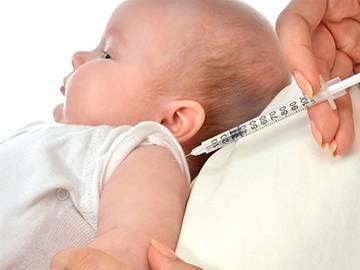
This can happen in different ways depending on the individual characteristics of each person.
So for some, the redness goes away after a week, while for others it lasts for more than 2 months. If such a reaction is detected, there is no need to visit a doctor, but when examined by a pediatrician, it should be noted that the vaccine has turned red.
After the BCG vaccination, a small swelling will appear at the injection site and a similar reaction will be observed for 2-3 days; it usually goes away on its own. This process should not cause concern.
After a month and a half, the process of suppuration and the formation of red pimples at the site of vaccination will begin, which is the final stage in the formation of a scar.
A keloid scar in the form of red and swollen skin at the site of vaccination indicates that the vaccine can no longer be administered to this patient.
Lump with pus at the injection site
The occurrence of an abscess at the injection site is especially fearful for most parents. Against this background, panic develops and for several months, when the process of suppuration begins, basically no one knows what needs to be done.
At the puncture site, a small abscess with a white head will form, covered in the middle with a crust, which is contraindicated to pick off and treat with ointments; it should go away on its own. The process of suppuration of the BCG vaccination is a normal condition and does not indicate any disorders in the child’s body.
In children suffering from immunodeficiency, severe purulent inflammation in the area of vaccination is possible. Such a reaction requires observation by a surgeon using conservative treatment, and in more severe circumstances it will be necessary to excise the affected tissue.
Increased body temperature
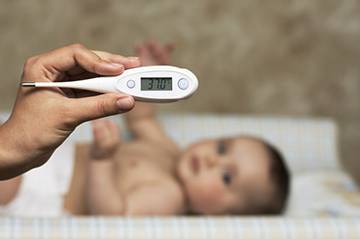
If the temperature rises to 38-38.5 degrees, it is necessary to give the child an antipyretic drug before bedtime. If you notice a fever in the morning, you will need to call a doctor for an examination.
A similar reaction is observed in the case of insufficiently strengthened immunity. In such a situation, there is no need to worry, because although the child’s immunity is weak and cannot overcome the virus, he will not get tuberculosis. For the same reason, cough, runny nose and redness of the throat may develop.
Swollen lymph node
If the lymph node has increased by more than 1 centimeter, this may indicate that mycobacteria have entered it, which will require immediate consultation with a specialist and medical intervention to avoid complications.
Lymphadenitis is an inflammatory process of the lymph nodes accompanied by enlarged glands, in some cases it occurs with suppuration and the formation of a fistula or other signs of intoxication of the body.
https://youtube.com/watch?v=BtmDavfquJY
What's the best way to go for a walk?
If the child feels well after the BCG vaccination and there are no signs of complications, then you can go for a walk. When planning a walk, you should follow simple rules:
- It is better to walk outside temporarily without unnecessary company, so that the baby does not become infected. Therefore, it is good if the child, during the post-vaccination period, walks alone with his mother or father.
- For the same reason, it is better to stay away from crowded places. Under no circumstances should you go to holidays, fairs, or other gatherings of large numbers of people at this time.
- It is better to avoid excessive activity for a while, let the body come to its senses. Let a younger child (a newborn vaccinated with BCG) sleep during the walk, and an older child (a revaccinated seven- or fourteen-year-old) should refrain from overly active pastime, and instead walk quietly and get some fresh air.
How to make a walk useful for a vaccinated child
After vaccination, it is better to limit the child’s contact with other people; you should walk away from crowded places to avoid infection. You should not go with your vaccinated baby to a store or market; it is better to go, if possible, to a park, forest and other similar places where there is a lot of fresh air, unpolluted by transport .
Since it is better to exclude excessive activity during a walk, for example, for the little ones, the ideal option would be when the baby is sleeping. When going outside after BCG, you don’t need to wrap your child up, this will not do any good, he will only sweat and may catch a cold, and after vaccination this is even more dangerous.

Photo 2. Walking in the fresh air in the forest is the best way to limit a child from contact with other people.
What to do if the BCG vaccine is red (inflamed) and swollen in a child or adult
BCG vaccination is one of the vaccines that a child is introduced to in the first days of life. Early immunization helps prevent the onset of tuberculosis, which affects the entire body. Young mothers often complain to doctors that their baby’s BCG is red. There are several reasons for the development of such a reaction; examination will help identify them.
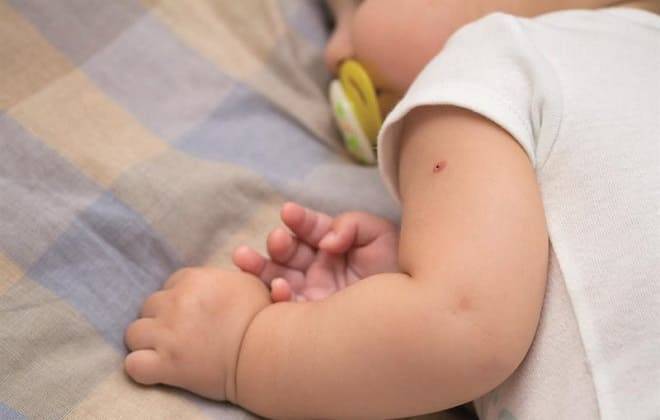
If a child has BCG inflammation, we may be talking about:
- Incorrect administration of BCG vaccination. If the Mantoux test performed after vaccination gives a negative result, revaccination is required. The second vaccination can only be done after 7 years, so the child remains under the supervision of a TB specialist. To prevent tuberculosis, the Mantoux test is done 2 times a year.
- The presence of natural anti-tuberculosis immunity. About 2% of the inhabitants of our planet have stable immunity to some bacterial and viral infections. Such people do not need additional protection. The body suppresses the development of infection until antibodies appear. In such cases, scarring changes do not occur after vaccination; only temporary redness of the injection site is observed.
- Formation of a subcutaneous scar. It is determined by a change in skin tone and slight inflammation of the tissue at the injection site. The skin becomes pink or red. This indicates post-vaccination changes occurring in tissues. If the scar that appeared 2 months after the BCG vaccination and the redness disappear, the vaccine ceases to be effective.
- Injection site infection. For this reason, BCG turns red in an adult. Penetration of pathogenic microorganisms is facilitated by trauma to the scar. The infection is accompanied by inflammation, causing redness and suppuration.
What symptoms should a baby see a doctor for?
Artificial immunization, despite all the benefits for the baby’s health, can also have a negative effect on him, which in most cases is temporary.
Adults should carefully monitor any changes in the child’s condition and, if signs of a pathological process develop, immediately consult a pediatrician.
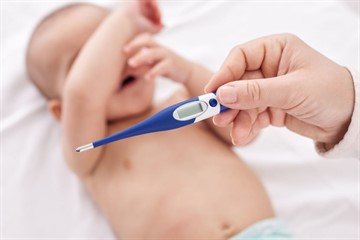
Complications after vaccination requiring treatment in a medical facility:
- severe (non-stop) pain at the injection site;
- heat;
- swelling;
- redness of a large area of the body.
However, the post-vaccination period includes not only the reaction to the vaccine itself. In some cases, it is the purulent process that causes particular concern.
Signs that the purulent process has gone beyond the norm:
- formation of an ulcer larger than 10 mm;
- a very swollen red (pink) halo around the wound;
- enlarged axillary lymph nodes;
- fever and signs of intoxication.
The doctor will be able to make an accurate diagnosis after a complete examination. In any case, the above signs cannot be ignored.
It is advisable to protect the vaccinated child as much as possible from the influence of any negative factors that can weaken the immune system and lead to secondary infection of the injection site.
What to do?
The normal reaction of parents, if the child’s BCG is red and swollen, will be to worry that the child has tuberculosis. Actually this is not true. After the vaccination has been given, it is necessary to monitor the reaction at the puncture site and the general condition of the baby. Redness of the skin and the subsequent possible appearance of suppuration should not cause panic among parents. Adults should remember that under no circumstances should the injection site be treated with any means. The abscess should also not be removed or attempted to be cleaned. Normally, this manifestation will soon pass and the abscess will heal and the redness of the skin will subside.
If the redness of the skin does not subside for a long time, then you should consult a doctor.
It is also necessary to make an appointment with a phthisiatrician if the redness begins to increase in size. Parents need to ensure that the child does not scratch the vaccine under any circumstances. After the examination, the doctor will be able to answer why this reaction occurred and prescribe additional examination if necessary.
Despite the fact that just under 100 years have passed since the invention of the BCG vaccination, today it is used in more than 60 countries around the world. BCG remains relevant and one of the most effective measures against tuberculosis.
Vaccination
One of the most exciting questions about vaccination is how many times children are vaccinated with BCG. According to the generally accepted calendar, three times:
- 3–7 days immediately after the baby is born;
- at 7 years old;
- at 14.
Sometimes in the maternity hospital, for some reason, vaccination against tuberculosis is not carried out (for example, the baby has some contraindications). If at 2 months the doctor still suggests getting a vaccination, there won’t be any special problems. But after this period (for example, 3 months), before that you will have to do a Mantoux test. And if only the result is negative, it will be possible to vaccinate. They do the same at 7 and 14 years old.
This technique makes it possible to strengthen the immunity of a small organism to tuberculosis and increase the percentage of resistance to the effects of mycobacteria. Moreover, revaccination at 7 and 14 years of age is mandatory if the child comes into contact with a patient with tuberculosis (for example, someone among relatives is infected).
The second question that worries parents is where newborns are vaccinated with BCG and whether it is dangerous. The usual injection site is the outer side of the left shoulder, the border between the upper and middle 1/3 of the shoulder is selected. The vaccine is administered intradermally: subcutaneous and intramuscular injections are excluded. If there are any reasons that prevent the vaccine from being administered specifically in the shoulder, another place is chosen where there is thick skin into which the injection can be easily placed - most often this is the thigh.
Despite the fact that all the information about BCG vaccination for newborns is open and available to parents today, there are still many refusals. Why?
Komarovsky about BCG
When asked by mothers whether BCG should be done, Evgeniy Komarovsky answers unequivocally - it is necessary. After all, it will be much better for a child’s body if it encounters a small number of weakened pathogens of a serious illness than if the child receives an infectious dose of strong and aggressive microbes. But the reality in Russia is that getting sick is as easy as shelling pears - people with infectious tuberculosis move freely, travel in public transport, go to stores, sneeze and cough on the street. There is no shortage of aggressive sticks.
The video where Dr. Komarovsky will tell you everything about the BCG vaccination can be seen below.
Komarovsky especially emphasizes that the test, which many mothers mistakenly also call vaccination, is a very informative way to find out whether the child is infected. The test must be done annually. If it suddenly turns out to be positive, this does not mean that the child will have a comfortable government bed in a tuberculosis dispensary. If an active live bacillus enters a child’s body, then usually the immune defense and the efforts of antibodies are sufficient to prevent tuberculosis from developing. In the absence of proper attention from doctors and parents, without special treatment, a serious illness develops in only 10-15% of children.
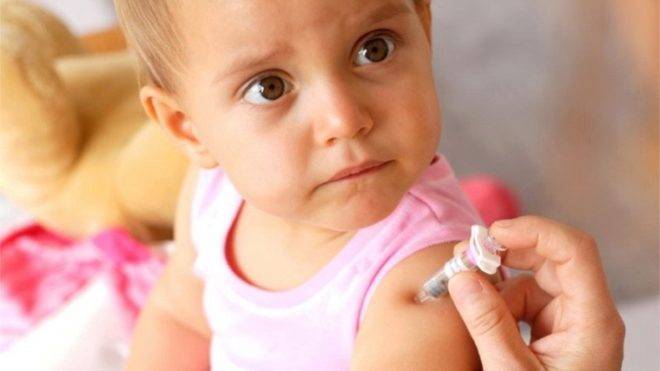
In general, the BCG vaccine protects quite effectively against fatal forms of tuberculosis, but, Evgeniy Komarovsky emphasizes, even timely vaccination and subsequent timely revaccination do not provide an absolute guarantee that the child will not get tuberculosis, although they significantly reduce this risk.
Dr. Komarovsky will tell you why the Mantoux test is needed for children in the next video.
Why you shouldn't squeeze pus out of a wound
A cold abscess after vaccination does not require special treatment if it is of an acceptable size and does not pose a danger. Ideally, it will disappear on its own after six months, but it is necessary to constantly monitor the purulent wound to notice all the changes.
The best method for caring for a cold abscess is to not touch or deform it. Scratching, cuts, punctures, as well as self-treatment with ointments, antiseptics and antibiotics can aggravate the situation. The fact is that they simply destroy the effect of the tuberculosis bacillus, which makes the vaccination useless.
If mechanical damage occurs, it is advisable to cover the abscess with clean gauze and immediately consult a doctor. If a cold abscess forms, it is strictly forbidden to:
- independently open, pierce or cut the abscess;
- comb, pick, squeeze out pus from the wound;
- apply antiseptic, antibacterial sprays, ointments yourself;
- bandage or seal with a plaster.
The pus should come out on its own, but if the abscess has reached a large size and the area around it looks inflamed/swollen, the doctor will open the purulent capsule and prescribe treatment. You cannot pump out the pus yourself, because only a doctor can do this professionally, otherwise the contents of the abscess will accumulate elsewhere or a secondary infection will occur. If the abscess does not go away, then this is a reason to consult a doctor.
Photo 4. Measuring the BCG value in a child. This is done to ensure that the permissible dimensions are not exceeded.
BCG is festering, what to do?
What parents should do if the BCG vaccine fails should only be decided by a doctor. Independent manipulations can disrupt the formation of immunity to tuberculosis and cause the development of complications.

Why you shouldn't squeeze pus out of a wound
When an abscess appears after BCG, you cannot squeeze it out, pierce it, treat the injection site with antiseptics, or cover it with a band-aid. At the site of drug administration, lymphocytes gather to fight the pathogen. If you violate the integrity of the skin at this moment or start treating it with any antiseptics (brilliant, iodine, alcohol), full immunity will not be formed.
What to do if the abscess bursts and the pus comes out
First of all, in such a situation, you should contact your family doctor or pediatrician. If he confirms that this is a normal reaction of the child to the vaccine, only observation is required for the wound. Before a crust forms, it should be covered with a sterile, dry gauze cloth to prevent secondary infection.
In order not to provoke negative reactions to vaccination and the development of complications, you need to follow simple rules:
- First of all, you cannot get vaccinated if there are contraindications to vaccination;
- The injection is administered after 30-40 minutes. after feeding, half an hour after vaccination, you can give the baby breastfeeding;
- on the first day after vaccination, you should not wet the vaccine injection site;
- For several weeks, do not rub the skin with a hard washcloth or scratch it;
- for several weeks after vaccination, it is necessary to avoid contact with strangers, since the immune system is weakened at this moment;
- if a child is from a family where there are patients with tuberculosis, the vaccination is not done or is done after contact with the sick person has been excluded.
What does a complication look like?
The appearance of a small inflamed wound after vaccination should not cause concern to the child’s parents. It’s worse if BCG does not fester. This is the first sign that the baby’s immunity is too weak and is not able to respond normally to hostile microorganisms.
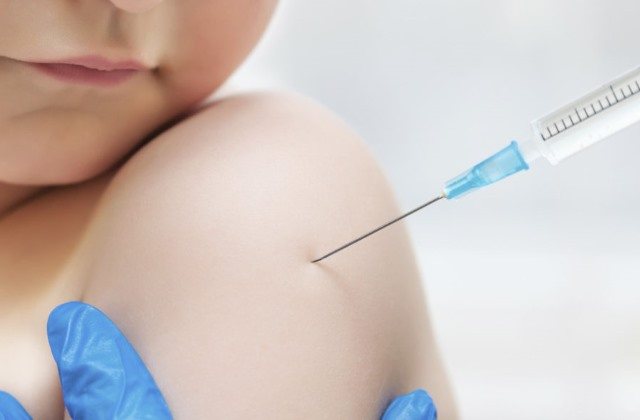
After vaccination, both parents and the local pediatrician monitor the condition of the wound. If BCG was given to a child over seven years old, you should listen to all children’s complaints. The concern is:
- temperature;
- swollen injection site;
- strong pain;
- too much suppuration;
- noticeable redness outside the wound.
We recommend reading! Follow the link: When to do and after how long the Mantoux test
Inflammation that exceeds 10 mm is evidence of a negative reaction. It is possible that the child has an individual intolerance to the components of the vaccine or an immunodeficiency. The injection site of the vaccine must be shown to the doctor.
What it is
BCG is a vaccine against tuberculosis, a disease that kills about 3 million people worldwide every year. Vaccination is mandatory in 19 countries. The vaccine contains a weakened bovine tuberculosis bacillus. The drug exists in two versions: BCG - for ordinary children and BCG-M - for babies born prematurely.

The first vaccination is done without a preliminary Mantoux test; for revaccination, a preliminary “button” is required. The fact is that it makes sense to get vaccinated only if infection has not yet occurred. If the child’s body has already encountered Koch’s bacillus, then there is no need to vaccinate. The Mantoux test just shows the advisability of revaccination.
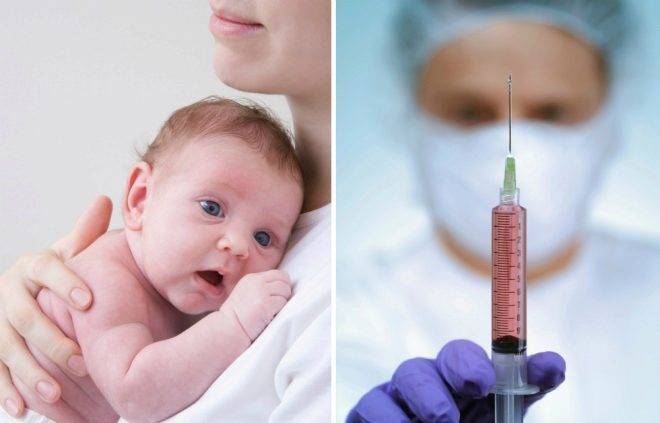
The vaccine is administered subcutaneously into the shoulder. The injection site sometimes festers, although this is an individual reaction, but everyone, with a few exceptions, remains with a characteristic scar, confirming the fact of vaccination.
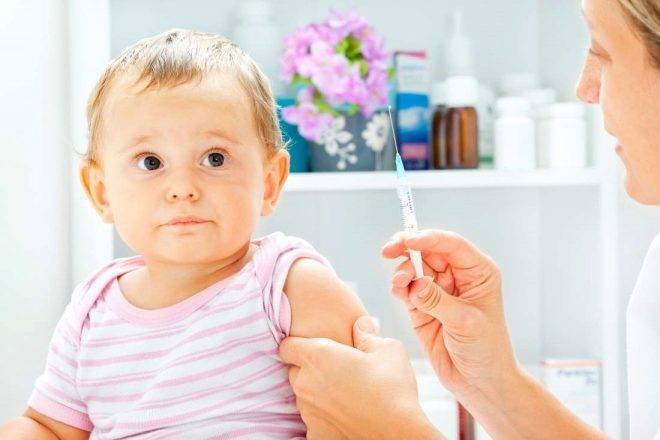
Why does suppuration appear?
Suppuration is a normal reaction of a healthy body to the introduction of a virus. Local immunity is “switched on” at the puncture site. The active production of antibodies begins, which should defeat the tuberculosis bacilli. In the process, lymphocytes and bacterial cells are destroyed.
We recommend reading! Follow the link: Is pulmonary tuberculosis curable?
The process of “ripening” of the abscess continues for some time. It should leak out on its own, without third-party intervention. Afterwards a crust forms. The suppuration gradually passes, but the wound may refill with liquid contents. This is normal and should not cause alarm.
The average healing time is 2-3 months. During this period, the cold abscess heals completely, unless the doctor’s recommendations have been violated. The skin does not recover completely: a characteristic scar remains at the site of vaccine administration, which will remain with the person for life.
BCG vaccination festers, what to do
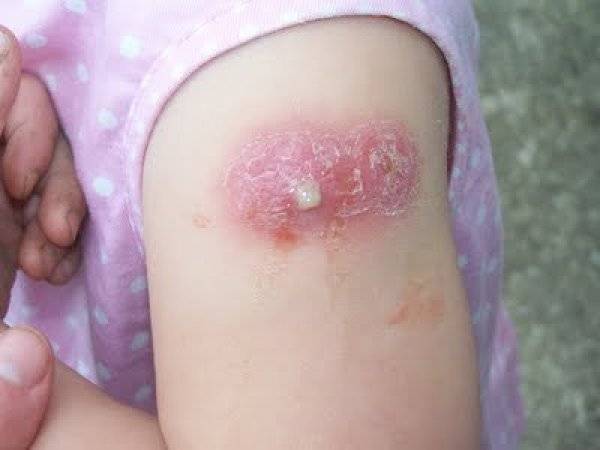
If the process of suppuration is not accompanied by accompanying symptoms that may indicate the presence of pathology, then no treatment is required. Moreover, it is prohibited to do anything with the bubble. All that is required of you is not to interfere with the body’s immune response. Everything will go away on its own.
Very often, parents unknowingly begin to treat the injection site using antiseptic ointments, disinfectants, for example, drawing an iodine grid. You should know that this is strictly prohibited. Moreover, you should not try to tear off the crust yourself or squeeze out the contents of the abscess. And when the papule opens and the contents begin to come out of it, all you need to do is gently blot the area with a sterile napkin, it is advisable to temporarily wrap the handle with a sterile bandage to prevent infection from entering the open wound.
If the formation of pus in a child is pathological, he will be provided with assistance in a medical institution; they can get by with both conservative treatment and surgical treatment, if necessary.
What to do if the abscess bursts and the pus comes out?
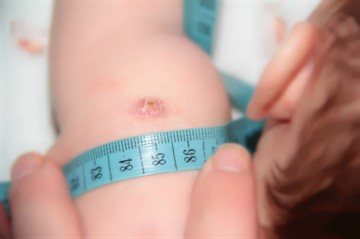
Spontaneous opening of a purulent “bump” is a natural stage in the formation of specific immunity. Now the main task is to wait for the abscess to “clean itself.”
It is prohibited to speed up this process by squeezing out the contents inside the wound. When the pus comes out, the shoulder should be covered from the external environment with a sterile bandage and wait for its natural healing.
There is no need to panic, but if the abscess does not heal and swells, the discharge becomes more abundant and hyperemia is observed, then, most likely, something has gone wrong. In this case, the child needs qualified medical care, so any self-medication is inappropriate.
You cannot visit the pool during active discharge of pus.


